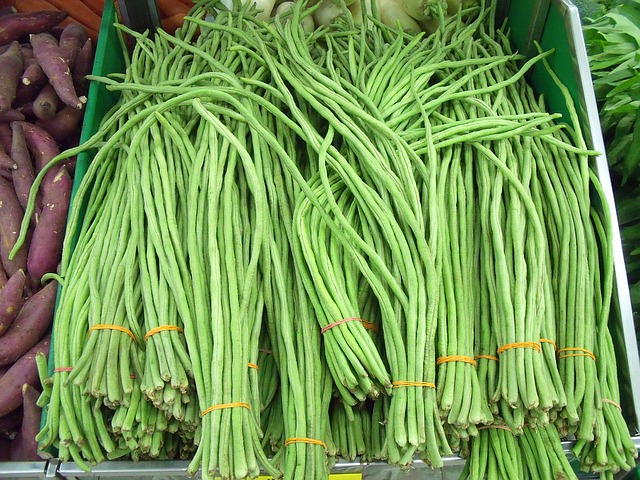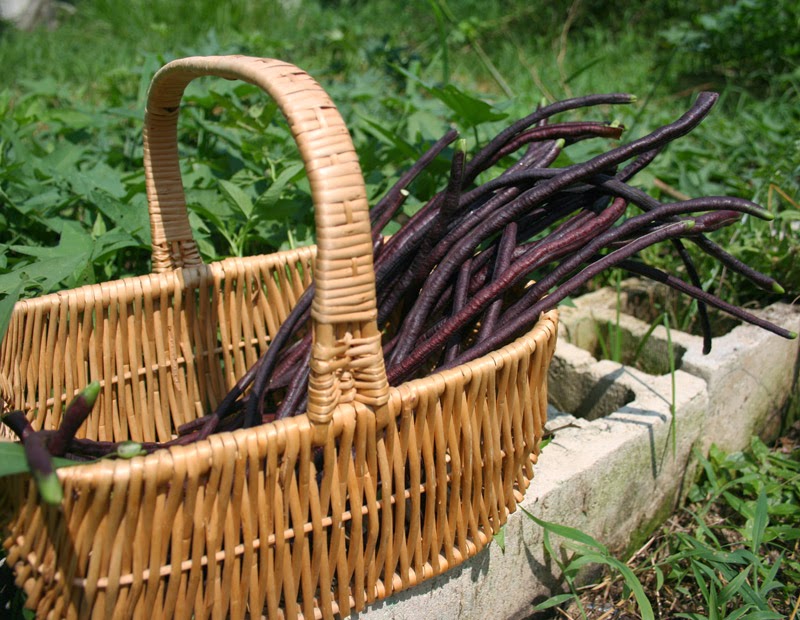When it gets to the middle of summer, a lot of gardens start shutting down. Even up north, the heat can get to a point where a lot of crops are ready to call it quits. I remember my garden in Tennessee going from being a lush oasis to a water-hungry wasteland of thirsty plants and cracked clay.
When I lived in North Florida, we got plenty of rain, but the heat and humidity wreaked havoc on my veggies. Year after year, I coaxed tomato plants into a state of glorious green growth, only to have fruit rot and leaves wither during the brutal summer, taking my dreams of prizewinning beefsteaks with them.
In situations like these, there are only a few plants that power on through—and one of my favorites is the amazing “snake bean.”
What in the World Is a Snake Bean?
Snake beans are originally from Southeast Asia. They’re also known as “yard-long beans,” “asparagus beans,” or “Chinese long beans,” not to mention a bunch of Asian names I can’t pronounce.
You May Also Enjoy:
“Boost Your Testosterone with Velvet Beans”
“(Video) Everything You Need to Know about Saving Bean Seeds”
“How To Use 50 lbs. Of Dry Storage Beans Fast—And Like It!!!”
As a member of the cowpea family, they share the cowpea’s tolerance for drought, hot weather, and poor soil. Yet, unlike the normal “black-eyed” cowpea that we’re used to, the snake bean has delicious stringless pods that are eaten like green beans, though these beat the tar out of your run-of-the-mill green bean, since their pods are 18” or longer.
Yeah, you read that right—these suckers are like the Hummer of green beans. To top it off, they have an excellent gourmet flavor, with a hint of mushrooms and almost nutty overtones.
How to Grow Snake Beans
Now that you know what they’re like, how do you grow them? Fortunately, it’s very easy. For those of you that live further north, you may not be able to pull these beans off—but for the bottom half of the country it should be a snap. The downside of yard-long beans is that they take a few months before they start bearing. The upside is that once they start bearing, they keep bearing for a long, long time. The northern gardener will need to plan his growing season with care, since snake beans require plenty of heat and are intolerant of frost. That said: if you can grow cowpeas, you should be able to grow snake beans.
Though you may be tempted to grow the purple or red varieties of snake beans, I have found them to be more fibrous, less tasty, and less prolific. The green ones are the best.
After all—and I mean all—danger of frost, plant the seeds at about 1” deep. Be sure to plan for trellising before you plant, since these guys love to climb. After about a week, the seedlings will pop up … and then poke along for a while. For the first few weeks, growth is slow, but then they leap into action. The vines will grow about 12–16’ long, and they’re quite aggressive. If your trellis is weak, they will knock it over. I grow them along a privacy fence and tie twine or lean bamboo poles against it to get them going. A few months after planting, you’ll start getting plenty of lovely 1” blooms, followed by amazingly long pods.
Snake beans grow best in full sun, but they’ll also handle half shade (though if you’re in a place with weak sunlight, I wouldn’t try it). They’re very good climbers and will easily crawl over shrubs, arbors, buildings, and their weaker kin. Another bonus is that they fix nitrogen while making a decent amount of greenery for composting in the fall. Snake beans don’t mind poor soil, though they do enjoy some fertilization. I’ve given them a pretty good load of nitrogen without noting a drop-off in their production. The leaves got wonderfully green and huge—but the beans stayed the same size.
Harvesting Snake Beans
Like most pole beans, the yield of snake beans is much better than that of bush beans. In my estimation, it even beats other pole beans. I’ve picked these guys for months at a time before the plants gave up. Make sure you don’t damage the vines when picking, since they’ll continue to produce beans prolifically for a long time if you treat them with a little deference.
Watch these plants closely once you see them start setting pods. The beans grow remarkably fast and need to be picked often. If you pick them too early, the pods won’t reach their full potential. If you pick them too late, they’ll get tough, bumpy, and leathery. A great thing about these guys is that one of their beans is the size of about 5 regular green beans. Pick a handful and you’ve got dinner. Pick a few handfuls and it’s time to can!
Unless you really love beans, 12 plants will probably produce enough to allow a family of 4 to eat snake beans a few times a week through the growing season. Better: have a family of 8 or 10, and then plant your whole fence line. The extra pickers are nice to have around, and kids totally love seeing these monster beans. Mine pick and eat them from the garden regularly.
Unlike some beans, snake beans also hold up well under cooking. You can boil them until they’re soft, but they’re really good sautéed al dente in butter or olive oil. Steaming is also a good option. If you have a favorite recipe for green beans, try it on these; the flavor, as I’ve mentioned, is superb.
Saving Seed
Unlike some varieties that can be used for both green and dry beans, the snake bean isn’t good for shelling. The seeds are rather unimpressive little things that look like anorexic kidney beans. The yield is in the pods on these guys—not the seed itself. However, you will want to save some seed from year to year, so it’s a good idea to designate a few plants as your “seed” plants and let them mature some pods. When pods are mature, they’re huge and have papery husks. Simply pull them off the vine at that point and bring them inside to dry further, then split and save the seed. Don’t worry if the seeds look pathetic or even a bit wrinkly—they’ll grow.
A Final Thought
If there was one bean I’d recommend to the gardener with a long summer, dry seasons, poor soil, and brutal heat, this would be it. Bonus: it makes you look cool as heck to have gigantic beans—even if your fantasy of raising perfect beefsteaks remains unattainable.
What Do You Think?
Have you ever grown snake beans? If so, what’s your favorite variety to grow? What other crops have you found to do well with poor soil in hot, dry summers? Let me know in the comments below!
David The Good is a Grow Network Change Maker, a gardening expert, and the author of five books you can find on Amazon: Compost Everything: The Good Guide to Extreme Composting, Grow or Die: The Good Guide to Survival Gardening, Totally Crazy Easy Florida Gardening, Create Your Own Florida Food Forest, and Push the Zone: The Good Guide to Growing Tropical Plants Beyond the Tropics. Find fresh gardening inspiration at his website TheSurvivalGardener.com and be sure to follow his popular YouTube channel.










COMMENTS(5)
Hmm. Food for thought?
Interesting. I would just like to see if I can post on the blog.
I think I will try these! Just moved to a new place that has very small yard, but has 2 trellises on the side of the house. I was going to plant some jasmine but I think I’ll try these, if I can find them!!
I am in central Texas. These grow very well here. The beans are grown for a cash crop in Guyana, my wife’s home country. There they are called “Bora”. These beans are very good in Chinese stir fry.
what is the best way to address the coppery edges that I am seeing on my yard beans. I also notice that they tend to develop good old powdery mildew (I think). Any suggestions for dealign with that?